Blackmagic Design makes some big claims about the Pocket Cinema Camera, the smallest device in its range of cameras. Documentary maker Patrick Wells shares his thoughts on the camera.
Blackmagic describes its Pocket Cinema Camera as the world’s most compact Super 16 digital film camera, and there’s no denying that it’s a diminutive – and cheap – piece of kit.
Blackmagic says the camera provides “everything you need to bring a cinematic film look to the most difficult and remote locations” and helps with situations when you don’t want to be noticed, such as protest marches or war zones.
With that in mind, we asked documentary-maker Patrick Wells to put the camera through its paces.
Patrick Wells: One of the first things I noticed about the Pocket Cinema Camera is the lack of an articulated screen.
I often use a Panasonic GH2, which has an adjustable screen, and going back to a camera that doesn’t have one makes life very difficult.
Without an articulated screen you have to use the camera at eye level, so if you want to get a low shot you have to lie or kneel down, and it makes it difficult to get high shots in a crowded place.
An articulated screen is also better for low-profile shooting, and if you’re shooting an interview on your own, you can check the screen without returning to the camera each time.
It seems like a crazy decision not to include one, particularly for journalists running around in tricky environments.
The screen is also quite hard to see in direct sunlight. Most camera screens aren’t great, but an articulated screen would help that.
Perhaps Blackmagic didn’t include one to help keep the camera small and compact, but it would only have made it a couple of millimetres larger. And the camera just doesn’t need to be as small as it is.
Making it this size is a false economy; there’s no point sacrificing features just to have a small camera.
But the build quality is good and it has a nice metal frame that feels very sturdy.
Once I’d figured out that you need to double-click certain things the menu system was fairly intuitive and the software simple – partly because it doesn’t have many features.
White balance
If the camera is targeted at those shooting in dangerous places, it really needs to have auto white balance.
Not having it makes me wonder whether they consulted anyone in my industry. If you’re outdoors and you run into a tungsten-lit room, you might not have time to reset your white balance, which means your shot could be ruined.
Having said that, with 13 stops of dynamic range the camera may have enough latitude to fix any poor lighting in post.
But when you’re operating as a solo video journalist, you don’t always have time to regrade footage.
The iris control is push-button instead of roller, which makes it a bit slow and quite jerky if you adjust it mid-shot.
It’s a small thing, but other cameras manage to include it.
The images I shot looked good, but it only shoots ProRes 422 (HQ), which works out at more than 1.5 GB of data per minute.
If you’re in the field, it’s too much data to reasonably handle. Some news outlets still accept SD (although this is changing), so it seems like overkill and will give you an unmanageable amount of data.
To only have one data setting seems strange; a firmware upgrade to add a lesser data rate option would help.
There needs to be a setting that’s a sensible balance between meeting broadcast standards and delivering a good image that doesn’t require you to constantly buy new hard drives to store the footage.
Not having any audio meters will also freak some people out.
I always use a hot shoe to attach a video mic to back up my audio in case there’s a problem with my audio recorder, so its absence is a bit of a pain because you’ll need an adapter or bracket to attach an external microphone to the camera.
It seems as though the camera is designed to be screwed into a rig, but when I’m working alone or in hostile environments, I tend to keep rigs to a minimum.
The Pocket Cinema Camera was not everything I hoped it would be.
It feels as though it is more suited for use in a studio or in controlled conditions as a second camera for a DoP, or for use on corporate videos or for shooting short films.
This camera could help to raise the production values of a shoot, but only in the right conditions.
For example, it would be good to shoot a report from a refugee camp with sit- down interviews, but it wouldn’t be so good for capturing actuality or filming in hectic situations such as a demonstration because it just doesn’t have enough settings – there aren’t enough dedicated video features.
You could make it work, but why make an average camera when you can use a really good one? There is a place for this camera in my gear, but if Blackmagic added a few features, it would be a better all-round camera.
Too many aspects of it create the impression that Blackmagic designed it first and then decided on a target market.
Key Stats
Lens mount Micro four-thirds
Sensor size 12.48mm x 7.02mm
Dynamic range 13 stops
Resolution 1920 x 1080 Frame rates 23.98p, 24p, 25p, 29.97p, 30p
Recording format ProRes 422 (HQ)
Connections 1 x micro HDMI out Audio 1 x 3.5mm stereo, 2 channels 48 kHz and 24 bit
Screen LCD 3.5 inch, 800 x 480 resolution
Storage Removable SDXC, SDHC cards
Battery Removable lithium ion providing approximately one hour of continuous recording Specifications 5.04 inch x 1.5 inch x 2.6 inch
Weight 12.52 oz
Price From £729
- Patrick Wells has worked for Reuters, Al Jazeera, Channel 4, CNN and Associated Press in Africa and the Middle East. His film Holding The Line for Al Jazeera was shortlisted for a Grierson Award and nominated for the Rory Peck Awards

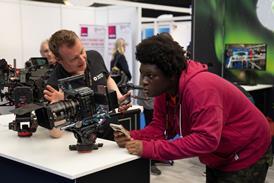




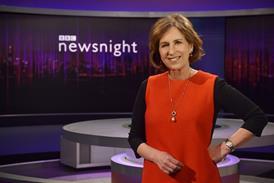



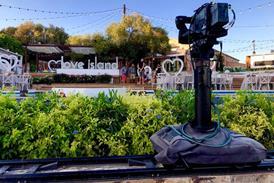
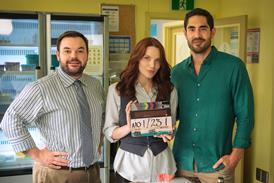


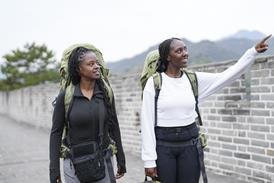













No comments yet